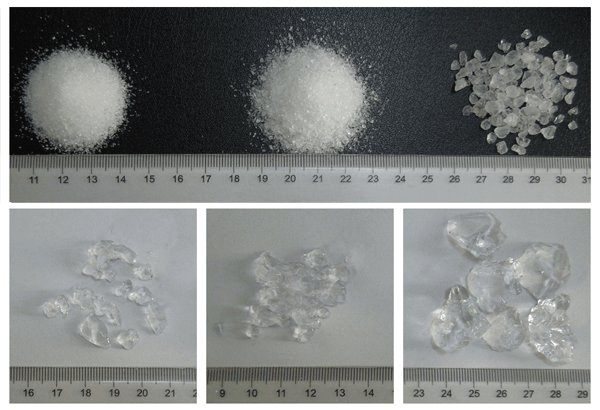Get Free Sample
Super Absorbent Polymer (Hereinafter referred to as SAP) is a new type of functional polymer materials. As a absorbency material, it can absorb hundreds to thousands times its weight and become to water-swelling Hydrogel.Hydrogel have the ability to keep water even if under the pressure. It is so different from the other traditional water-absorbing material such as tissue paper, cotton, sponge, and fluff pulp. So, what is the history of SAP?

In the 1980s, water absorbing materials were tissue paper, cotton, sponge and fluff pulp. The water retention capacity of these materials is only 20 times their weight – at most.
In the 1960s, the United States Department of Agriculture started to work on materials to improve water conservation in soils. They developed a resin based on the grafting of acrylonitrile polymer onto the backbone of starch molecules.This new absorbency material can absorb more than 400 times its weight. The most important thing is, the gel did not release liquid water even under pressure!
As Japanese companies were excluded by the USDA, they started independent research using starch, carboxy methyl cellulose (CMC), acrylic acid, polyvinyl alcohol (PVA) and isobutylene maleic anhydride (IMA).
In the 1970s, powder that absorbs water was used commercially for the first time -for disposable hygienic products (not for soil amendment applications as originally intended).
SAP was first used in Europe in a baby diaper in 1982. Shortly thereafter, UniCharm introduced super absorbent baby diapers in Japan.
Over the years, technology has progressed so that there is little if any starch-grafted moisture adsorbing polymers used in disposable hygienic products. These super absorbents typically are cross-linked acrylic homo-polymers (usually Sodium neutralized).
Super absorbents used in soil amendments applications tend to be cross-linked acrylic-acrylamide co-polymers (usually Potassium neutralized).
Powder that absorbs water usually refers to a class of highly absorbent powdered substances that are used in a wide range of applications due to their highly efficient hygroscopic properties. They quickly absorb and lock in moisture from the surrounding environment, effectively preventing dampness, mold or controlling humidity.
Water absorbing chemicals, also known as hydrogels or superabsorbents, are specialized materials designed to efficiently capture and retain large volumes of water. Water absorbing chemicals, commonly referred to as hydrogels or superabsorbent polymers, are specialized compounds capable of absorbing and retaining large quantities of water.
Water absorbing powder, also known as water-retaining powder or super absorbent powder, is a type of material capable of absorbing and retaining large amounts of water, typically many times its own weight.
Super absorbent powder is a specialized, high-performance material capable of absorbing and retaining extremely large quantities of liquid, often up to several hundred times its own weight. Absorbent materials are substances capable of absorbing and retaining liquids, gases, or other fluids.
We have “Ask The Expert” online service 24/7. If you have any questions please contact us.